Australian-based Neve Gear is a brand passionate about ultralight backpacking, dedicated to providing quality gear specifically for Aussie hikers.
Their founder, Ryan, reignited his love for the outdoors after pandemic lockdowns. However, his initial adventures were hampered by bulky, underwhelming gear that struggled to keep him warm. Living in regional Port Macquarie, limited access to ultralight options and long online wait times became a recurring frustration.
Determined to find a solution, Ryan embarked on a journey of research and experimentation. He designed and crafted his first quilt, seeking feedback online to refine his creation. This led to a surge in requests for custom gear, ultimately sparking the birth of Neve Gear.
Since then, the company has grown steadily, fuelled by Ryan’s dedication to offering high-quality, lightweight options for Australian hikers.
After chatting with the guys from Neve Gear, I was thrilled to receive one of their quilts to put through its paces on the trail.
The past couple of months, I’ve been out on a heap of rewarding overnight and multi-day hikes, using the Neve Gear Waratah Quilt as my primary sleep system. The first of these was the 28km Lerderderg Northern Circuit, close to home, that offers a diverse landscape, from dry forests to a deep river gorge. Another was a multi-day hike to Lake Tali Karng and The Sentinels in Victoria’s High Country.
On these, and many more adventures, the Waratah has proved to be a versatile and comfortable companion.
Before we dive into the review, here’s a quick look at what a quilt is and why you might consider one.
What is a Quilt?
Hikers are constantly seeking ways to lighten their packs. One area where gram-counters are turning is from sleeping bags to quilts. But are quilts really all they’re cracked up to be? Let’s explore the pros and cons of each to help you decide.
Imagine a sleeping bag sliced open down the back, with no hood. That’s essentially a quilt. It drapes over your body and tucks around the sides, relying on your sleeping pad for insulation underneath. Quilts often have a short zipper at the footbox and straps to secure them to your pad, minimizing drafts. Unlike a traditional mummy bag that fully encloses you, a quilt provides insulation only on the top and sides of your body. It typically straps or clips above your sleeping pad underneath you, creating a warm envelope. Quilts are becoming increasingly popular among ultralight backpackers due to their weight and space-saving advantages.
Why Choose a Quilt?
By ditching zippers, hoods, and extra material, quilts are significantly lighter and pack down much smaller than sleeping bags with similar temperature ratings. Quilts also excel at adapting to different temperatures. You can use them open like a blanket on warm nights or cinch them up for warmth. Need to cool down? Simply stick a leg out or throw the quilt back, just like you might a doona at home.
Quilts offer more freedom of movement than mummy bags. Sleep on your side, stomach, or back – the choice is totally yours. I have a mummy bag as well as a sleeping bag with a full-length zip but unless the zip is left undone, I often feel constrained as I toss and turn at night. If you are a larger hiker will appreciate the extra wiggle room of a quilt.
Things to Consider with Quilts
While some quilts rival sleeping bags in warmth, they generally struggle in extremely cold weather. Drafts are a concern, and you’ll need a high-quality sleeping pad for proper insulation underneath. Quilts also require a bit more setup than sleeping bags. You’ll need to secure the straps to your sleeping pad each night. It’s not a lot of extra effort so I wouldn’t suggest that is the deciding factor.
There’s no single perfect choice. Quilts offer impressive weight and space savings, ideal for ultralight backpackers and those who prioritise movement and comfort. Sleeping bags provide improved warmth for cold-weather adventures. Consider your camping style and preferences to make the best call.
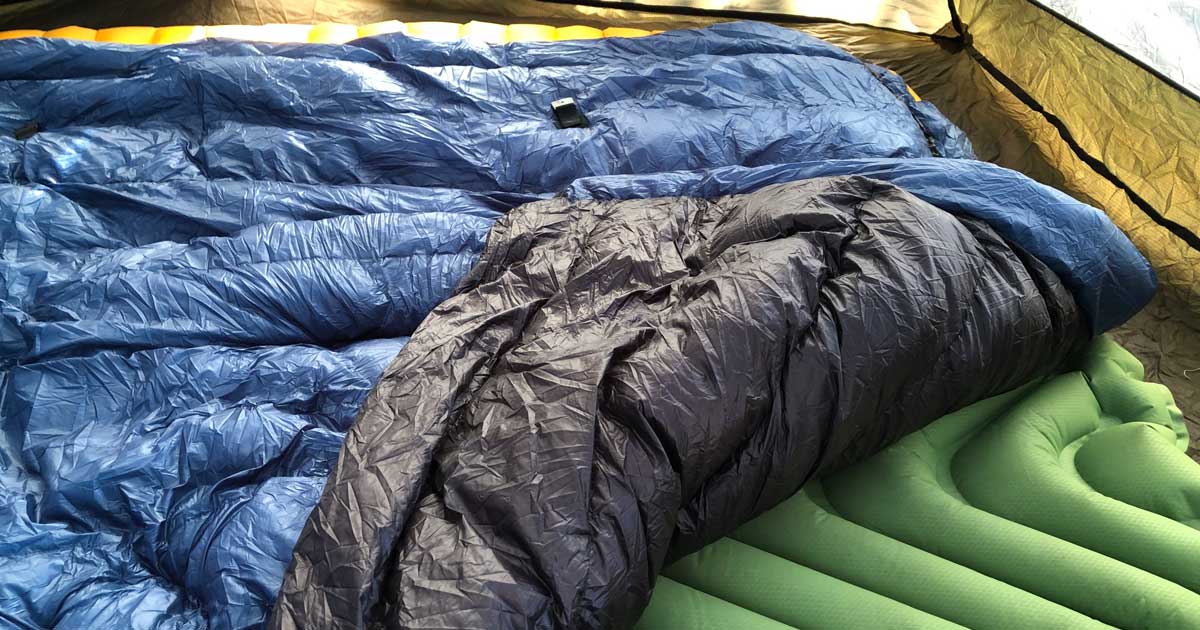
Comparing the Neve Gear Waratah Quilt
While I’ve always relied on a traditional Sea to Summit Trek TkIII sleeping bag (comfort rating: -5°C) for overnight hikes, the Waratah offered a noticeable difference in terms of weight and comfort. Here’s a breakdown of the key differences and how they compare:
Weight: Quilts typically weigh less than sleeping bags due to their lack of zippers, hoods, and full enclosure. The Waratah, for example, weighs in at a mere 610 grams (805 grams for the quilt I used) and packs down to a tiny 3 litres (6 litres for the quilt I used), making a significant difference on multi-day hikes. At 1.215 kg, my Trek TkIII is almost double the weight of the smaller Waratah. For me, every gram counts on long hikes, and the Waratah’s ultralight design translates to a more enjoyable experience on the trail.
Warmth: Here’s where things get interesting. The Trek TkIII boasts a comfort rating of -5°C, while the Waratah is rated for -8°C. However, warmth also depends on fill power and down fill weight. The Trek TkIII uses 650+ loft 85/15 duck down with a fill weight of 700 grams. The Waratah uses higher quality 950+ loft down, but with a slightly lower fill weight of 590 grams.
While the Trek TkIII boasts a lower comfort rating (-5°C) compared to the Waratah (-8°C), the actual warmth you experience can be influenced by several factors beyond the rating. The higher fill power of the Waratah’s down (950+ loft) could potentially compensate for the slightly lower fill weight (590 grams) compared to the Trek TkIII (700 grams).
As I was field testing this in Autumn, the nighttime temps only got down to as low as 5°C so I haven’t had a chance to push it to the comfort limits yet. Ultimately, conducting a side-by-side test in similar conditions would be the most accurate way to determine which sleep system is warmer for you.
Versatility: Even though the nights weren’t exceptionally cold, the Waratah’s adaptability to temperature was a major advantage for me. I am a hot sleeper and often sleep at home with only a sheet so that ability to regulate my temperature but pulling the quilt back was a real bonus.
Neve Gear designed the quilt with a zippered and drawcord footbox that allows for multiple configurations. On warmer nights (12°C), I could unfurl it completely for breathability, transforming it into a comfortable blanket. Conversely, the adjustable footbox and draft collar allowed me to create a cozy enclosure for colder nights on the trail. My traditional mummy sleeping bag lacks this level of adjustability, making it less versatile for various climates. Even with my Trek TkIII, I find it annoying that I regularly need to pull the zipper up and down to regulate my sleeping temperature.
Freedom of Movement: Quilts offer more freedom of movement compared to mummy bags. While mummy bags are known for their warmth, they can sometimes feel restrictive, especially for side sleepers. I can’t stand being constrained in a bag and the Waratah’s open design allowed me to shift positions comfortably throughout the night, tossing and turning without feeling constrained. I am also a stomach sleeper, and when I open my full zippered sleeping bag, my toes end up sticking out, so Neve Gear recommend sizing up to their 6’ 5” quilt to prevent this from happening.
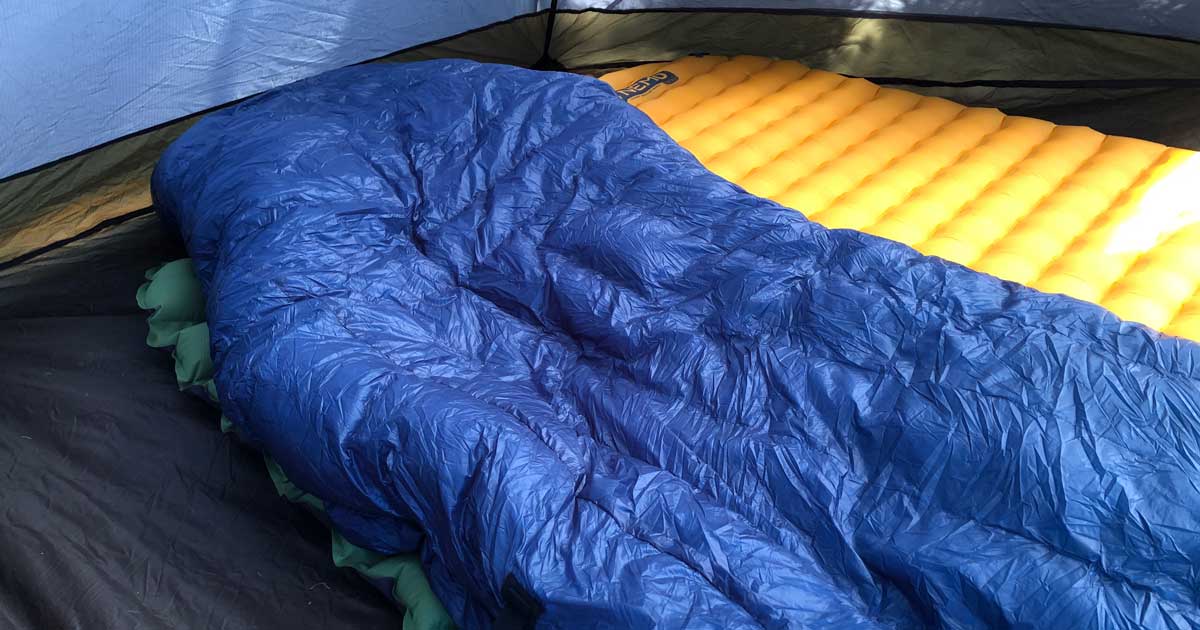
Why Choose the Neve Gear Waratah Quilt?
If you’re looking to shave weight from your pack and you prioritise comfort on the trail, a quilt is a compelling option for overnight and multi-day hikes. Here are some key benefits I found, highlighted by the Waratah’s design:
- Ultralight Advantage: Every gram counts on long hikes, and the Waratah’s weight savings were noticeable, making my pack feel much lighter, especially after kilometres on the trail.
- Adaptability: Quilts excel in various temperatures. The Waratah’s versatility, thanks to its configurable footbox and breathable fabric, made it perfect for the unpredictable weather on my couple of adventures. I could easily adjust the quilt throughout the night depending on the temperature.
- Freedom & Comfort: The open design of quilts, like the Waratah, allows for more freedom of movement compared to traditional sleeping bags, leading to a more comfortable night’s rest, especially for restless sleepers, side or stomach sleepers like me.
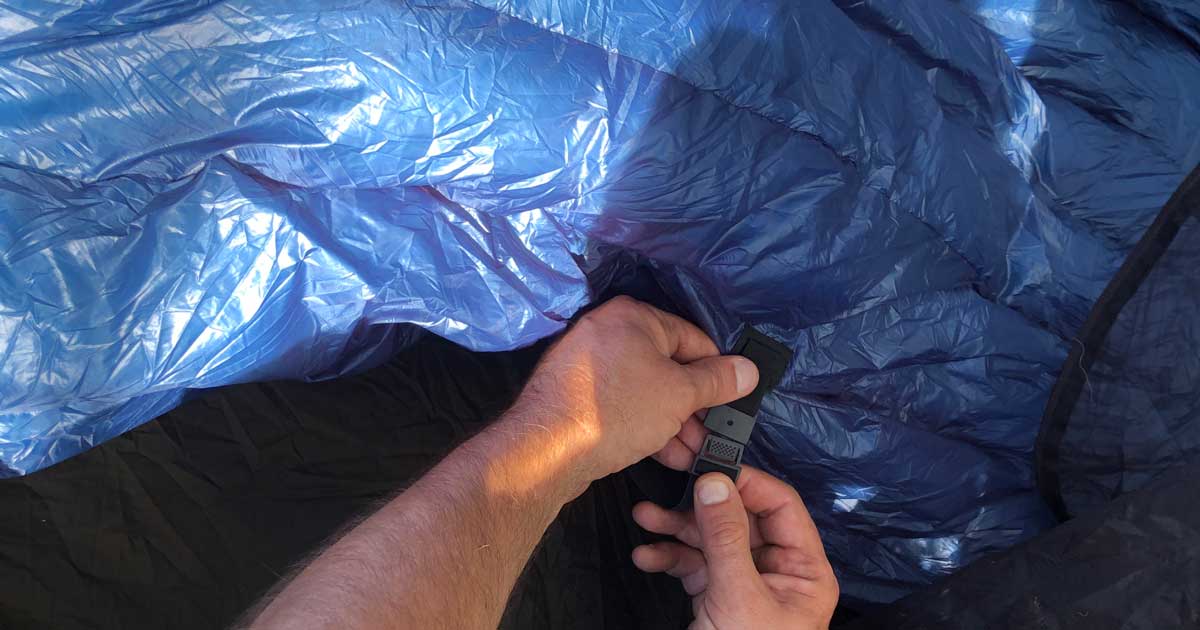
Neve Gear Waratah Quilt in Action
The Waratah was an awesome addition to my kit with a range of unique features. Here’s a few things that impressed me:
- Draft-Guard System: As a stomach sleeper who tends to toss and turn, the Waratah’s Draft-Guard system was a game-changer. Unlike other quilts, the strategically placed pad attachment straps ensured the quilt wrapped securely around me, eliminating drafts, and keeping me warm throughout the night. I tested the quilt without the straps and kept waking up with cold spots throughout the night. With the straps and draft-guard system in place, I had a fantastic night sleep. The footbox features a drawcord to cinch tight, with a footbox collar to prevent drafts. During testing I didn’t not notice any drafts around my feet. The neck employs a clever two-snap button system that integrates seamlessly with a drawcord collar. This combination allows for fine-tuning the fit, ensuring a comfortable and draft-free sleep. The quilt also includes two attachment straps that securely connect it to your sleeping pad, eliminating drafts from below. While these straps may seem simple, their functionality is undeniable, keeping the entire system working in perfect harmony.
- Exceptional Compressibility: The Waratah’s ability to pack down to a tiny 4 litres was a huge space saver in my pack. It took up half the space of my conventional sleeping bag and this allowed me to carry a few non-essential items of gear (like my Helinox Chair Zero and a bottle of red) without sacrificing comfort.
- Targeted Down Distribution: Neve Gear’s clever design incorporates differentially sized baffles. Overfilled footbox baffles provide targeted warmth where it’s most needed, while vertical baffles throughout the rest maximize thermal efficiency. This approach keeps you toasty without adding unnecessary weight. The quilt’s construction is equally impressive, featuring horizontal footbox baffles that prevent down migration and cold spots. Neat stitching throughout showcases the quilt’s exceptional craftsmanship.
- Durable and Breathable Fabric: The 10D nylon used in the Waratah struck a perfect balance between durability, breathability, and weight. The quilt felt comfortable even against bare skin. While it has a slightly delicate feel, similar to many lightweight backpacking materials, a little care goes a long way in ensuring its durability.
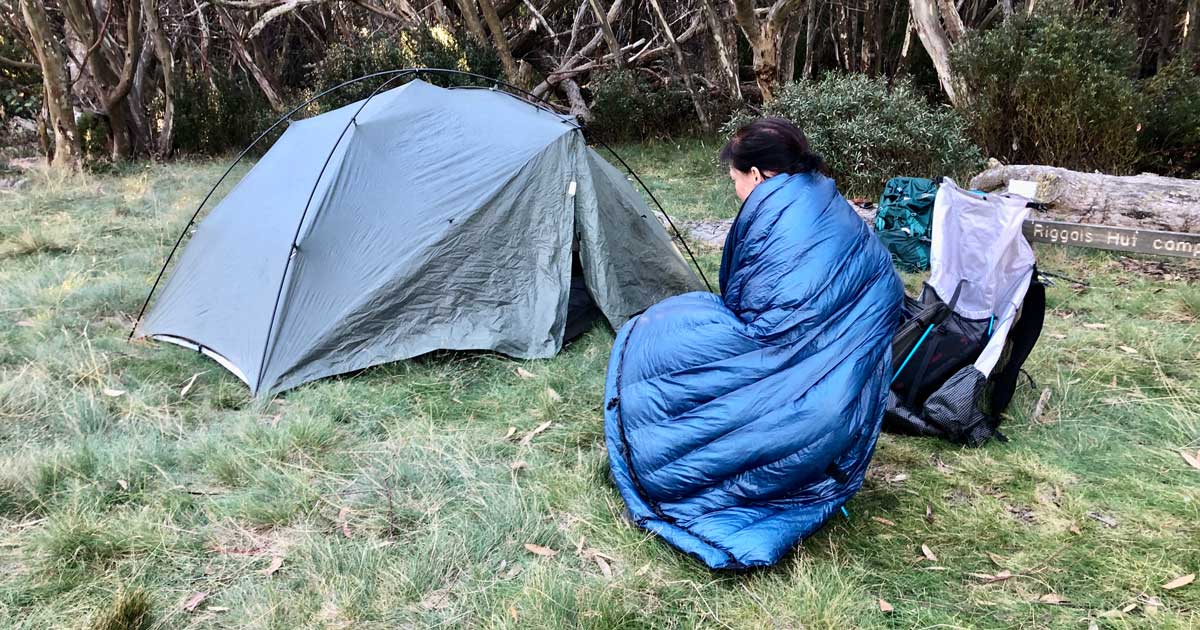
Overall Impression
The Neve Gear Waratah Quilt is a well-designed and thoughtfully crafted piece of Aussie made hiking gear. It excelled in the diverse conditions I encountered on my hikes, keeping me comfortable and warm every night. The quilt’s versatility, weight savings, and comfortable design make it a compelling option for hikers who prioritise weight, space, and comfort on the trail.
The quilt’s impressive warmth surprised me. Even as alpine temperatures plummeted with nightfall, I found myself needing to loosen the cinch after initially fearing the cold. This highlights the Waratah’s effectiveness – it kept me warm without feeling restrictive. The generous width, a welcome change from mummy bags, allowed me to freely switch positions throughout the night. No wonder “active sleepers” rave about quilts.
The decision between a traditional sleeping bag and a quilt depends on your individual backpacking needs and priorities. If shedding weight and maximising versatility are important to you, the Waratah Quilt is a strong contender. However, if absolute warmth in very cold conditions is your primary concern, a mummy bag might be a better choice.
For me, the Waratah’s lighter weight, comfortable design, and adaptability to various temperatures make it a great option for my outdoor adventures, especially in milder or three-season conditions. For very cold weather camping, I might opt for the additional warmth of my traditional sleeping bag, but who knows, as I am yet to test the Waratah Quilt in winter. I will report back here once I have.
From $449 I highly recommend you check out the Aussie made Neve Gear Waratah Quilt and see if it works for you.
Find out more at https://nevegear.com.au/products/waratah
Tech Specs
Quilt I tested:
- Quilt Weight: 805g
- Down Weight: 590g
- Compression Volume: 6L
- Comfort Rating: -8*C
- Down Type: 950FP
- Max User Height: 6’ 5″
Unfilled Specs:
- Shoulder: 147cm
- Hip: 127cm
- Foot: 105cm
- Height: 190/205cm
Materials:
- 10D Nylon Taffeta Inner and Outer Fabric
- Choice of 950FP Goose Down or 850FP Duck Down. Both 95% Down content
- 50cm YKK #3 Zipper
Features
- Differential Cut creates a natural curve and reduces the chance of compressing the down when moving or shifting while sleeping.
- Unique Pad Attachment system that utilises a draft barrier by placing the quilt clips in further from the edge of the quilt.
- Down Filled Collar for ultimate neck comfort and warmth.
- Draft Blocking Foot Box Closure.
- Overstuffed Baffles over the Foot and Torso Section for efficient warmth.
- RDS Certified Down Supplier, both 850 Duck and 950 Goose Down.
- Premium 10D fabrics offer a soft luxury feel and shave grams for the best weight to durability ratio.
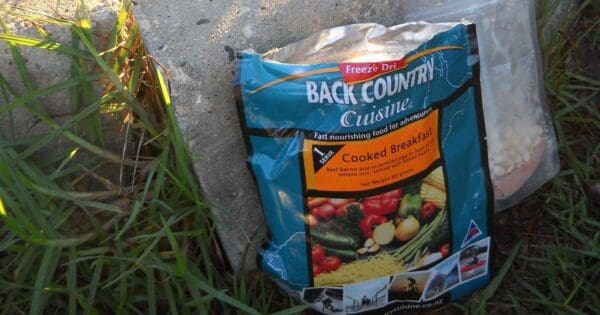
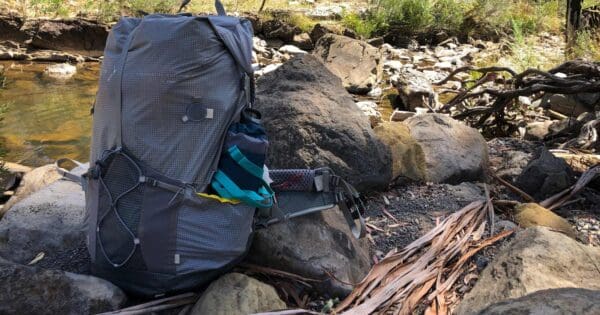
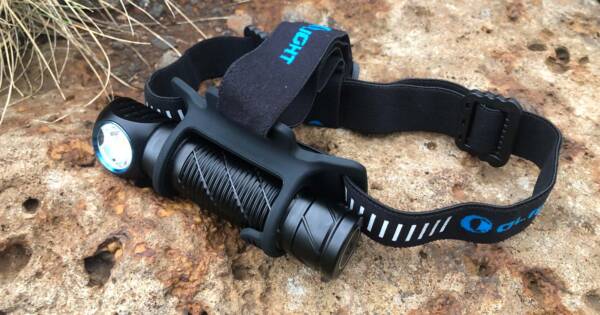



Anyone use a quilt for overnight hikes? Would love to know if you’ve used the NEVE Gear Waratah. Gotta say, I’m hooked.
Trail Hiking Australiayep I’ve been using one for a year and I adore it. So much easier to regulate temperature. Paired with a silk liner it’s super comfy.
Helen Wyn I agree. It’s the first time I’ve had the pleasure of using one and I can’t see any reason not to. I love that I don’t feel constrained and can toss and turn all I want without getting tangled up in the bag.
Trail Hiking Australia I switched to a quilt for the warmer seasons, yet to be brave enough to ditch a bag for anything too cold. I went with a One Planet, mostly because I was in the shop on little bourke and they had one in the clearance box for a really good deal. Have to say I love it.
Victor Allan
Definitely a game changer. I’ve been using a quilt for nearly 2 years now.
I’d been apprehensive at first because I thought I may get drafts and feel cold but that hasn’t been the case at all. I use a decent r value mat plus a fitted sheet that has a pocket for my pillow.
Warmer and more comfortable than ever before and won’t go back to a sleeping bag.
I often use my Mont lightweight sleeping bag as a quilt. I’m a tosser and often choke myself silly in a bag🙄
Beans Cazz I’m exactly the same.
Still loving my quilt. It’s even handy when snuggled in the couch for movie night at home 🙂